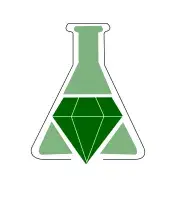- "Students are given the opportunity to assess chemical products and processes and design greener alternatives when appropriate."
- "Students understand and can evaluate the environmental, social, and health impacts of a chemical product over the life cycle of the product, from synthesis to disposal."
At the highest level of the ACS guidelines, students are expected to have a deeper understanding of and critical thinking skills around developing and designing greener chemical products and processes. This can include the various environmental, social and health aspects of a chemical product, in particular as it pertains to life cycle analysis.
GCTLC Library
Below are resources from the GCTLC library that are tagged with any of the following Green Chemistry Principles:
- #3 (Less Hazardous Chemical Syntheses)
- #4 (Design Safer Chemicals)
- #5 (Safer Solvents and Auxiliaries)
OR have been tagged with keyword "Life Cycle Assessment".
The variety of resources below should provide educators with numerous options to help tailor their lectures and courses with more green and sustainable chemistry content. However, if you have additional suggestions for resources, you can always submit them for inclusion in the GCTLC library, or you can post them in the forum "Green Chemistry Resources for Addressing the ACS Guidelines" on the GCTLC.

The Synthesis of Zinc Copper Indium Sulfide Quantum Dots
In this experiment, ZnCuInS2 quantum dots of differing sizes are prepared and analyzed by UV-Vis and fluorescence spectroscopy. The ZnCuInS quantum dot synthesis is inherently greener than common nanoparticle syntheses, e.g. CsPbX3 or CdSe, because the use of Pb and Cd is avoided. Due to their tunability and excellent optical properties, quantum dots have allowed for the development of QLED ...

Thirst for a Solution: Alginate Biopolymer Experiments for the Middle and High School Classroom
Middle and and high school curricula is described based on the synthesis of biodegradable calcium alginate capsules prepared from food-safe chemicals. Green chemistry principles are shared through the use of renewable and degradable materials and the application to new innovations in the design of environmentally friendly alternatives to plastic water bottles.
Emma R. Corcoran, Cassandra Lydon ...

Tools and techniques for solvent selection: green solvent selection guides
This review article overviews solvent selection guides and explains their role in helping to choose appropriate solvents as well as highlights their similarities and differences. Provides an overview of data from (and comparison between) solvent selection guides by GSK, Sanofi, Pfizer, ACS Green Chemistry Institute, and CHEM21.
Full citation: Byrne, F.P., Jin, S., Paggiola, G. et al. Tools and ...

Toward the Greening of Our Minds: A New Special Topics Course
A special topics course on "Towards the Greening of Our minds" is offered every other spring at Washington College. This course is designed for science majors who have taken general and organic chemistry and are interested in the future of the planet. The ultimate goal of the class is for students to use green chemistry as a way to critically evaluate environmental policy. Over the course of the ...

Toxicology
This module is part of a collection of nine green chemistry teaching modules developed in the early 2000s by a team of faculty (Donna Narsavage-Heald, Trudy Dickneider, David Marx, Timothy Foley, Joan Wasilewski) led by Michael Cann at the University of Scranton and has been migrated to the GCTLC. The subjects of the modules are based on winners of the Green Chemistry Challenge Awards. The modules ...

Using AI & Machine Learning to Accelerate Sustainable Innovation
If we are to meet the demands of sustainability and climate change in the time needed, green chemistry advancements will have to happen faster than traditional methods of discovery can often make possible.
In this episode of Green Chem Essential, with host James Rea, Dr. Alexi Lapkin and his fellow researchers describe how they are trying to use the combined power of machine learning & ...

Using Green Chemistry to Create a More Sustainable Pharmaceutical Industry
The medicines we rely on may look tiny when we hold them in our hands, but the manufacturing processes that create those medicines happen at a very large scale. Anything that makes those processes cleaner, safer, and more efficient can have a tremendous impact on efforts to fight climate change and create a more sustainable future.
Hear how green chemistry is helping to make those changes ...

Women in Green Chemistry and Engineering: Agents of Change Toward the Achievement of a Sustainable Future
Both green and sustainable chemistry and engineering can broadly reach and interconnect different aspects of our society. To promote peace and protect our planet by 2030, the systemic change enabled by the holistic and inclusive perspective of green and sustainable chemistry and engineering is essential. Within this context, women and girls occupy a unique position: (1) The consequences of climate ...
Pagination
- Previous page
- Page 14